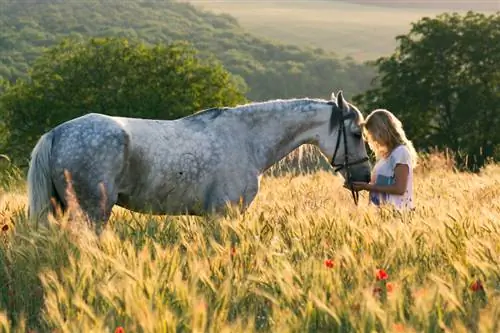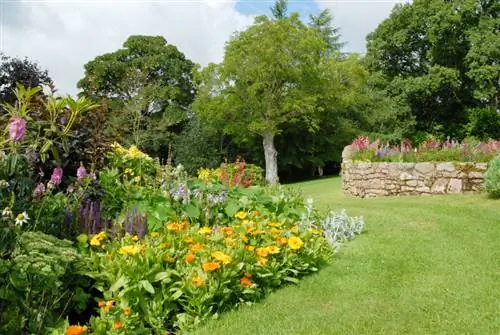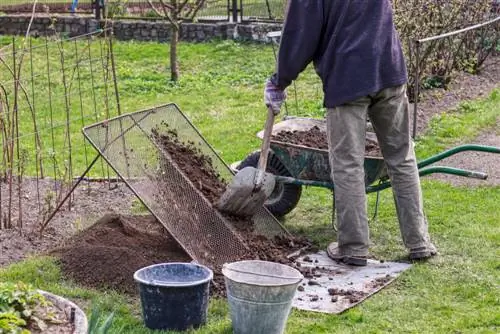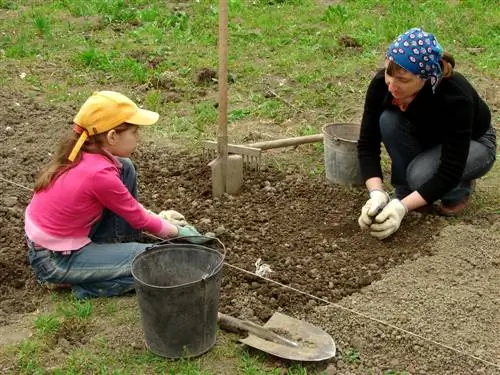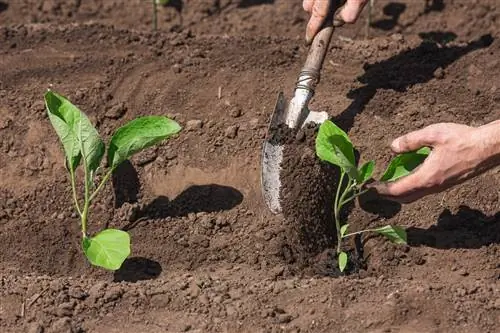- Author admin [email protected].
- Public 2023-12-16 16:46.
- Last modified 2025-01-23 11:20.
But does the ideal soil exist that all your favorite plants like and if so, what would it look like? From a purely visual and physical perspective, the ideal soil for he althy plant growth should have these properties:

What properties does the ideal garden soil have and which plants prefer which types of soil?
The ideal garden soil is crumbly, loose, permeable, medium-heavy and has good storage capacity for water, air and nutrients. Plants such as vinegar tree, lavender and iris prefer sandy soils, while elderberry, laburnum and monkshood prefer clayey soils.
- crumbly and fluffy,
- permeable,
- moderately difficult and
- storable for water, air and all nutrients
You can find this out quickly using the manual method. While a light base does not hold together when kneaded by hand, heavy bases are usually extremely easy to shape, similar to dough. The particular advantage of light soils is their high sand content, which absorbs a lot of air and helps them warm up quickly in the spring months. However, the soil's storage capacity for absorbing nutrients is quite low. Heavy soils usually contain a large amount of clay or loam, but allow moisture to pass through with difficulty. The golden mean for the garden would therefore be medium-heavy soil, in which the proportions of air, water, minerals and other nutrients are in the middle.
Equally important is the proportion of organic substances in the soil, which is of particular importance for plant growth and subsequent high yields. A fairly simple test provides an initial overview of this:
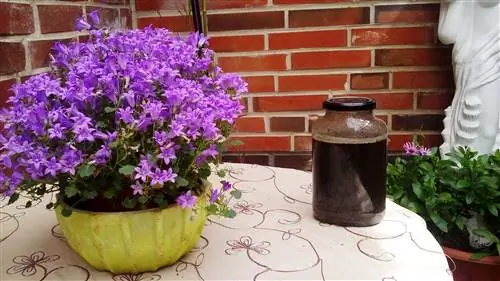
The heavier the soil, the slower the soil particles settle
- A screw-top jar is filled a quarter with garden soil.
- Now fill with fresh tap water up to one centimeter below the edge of the lid.
- Screw the lid tightly onto the jar, shake vigorously and let stand for about 30 minutes.
- If the water remains cloudy for a long time, it is heavy soil. The sand particles of light soils would settle much more quickly.
Plants and their demands on the garden soil
| Soil types | Woods | Perennials & Flowers |
|---|---|---|
| Sandy and light soils | Vinegar tree, serviceberry, sea buckthorn, juniper, ornamental quince | Arnica, garden sage, cornflower, lavender, catnip, iris |
| Clayey and heavy soils | Elderberry, laburnum, lilac, hawthorn, holly, tree of life | Pennigwort, monkshood, golden bulb, daylilies, miscanthus |
| Acidic soil (pH between 4.0 and 4.5) | Broom, hydrangea, magnolia, rhododendron, blueberry, camellia | Arnica, Busy Lizzie, Primrose, Lily, Bergenia, Heather Carnation |
| Alkaline soil (pH higher than 7.2) | Ornamental cherry, crabapple, fruit trees, butterfly bush, barberry | Blue cushion, poppy, peony, sweet pea, zinnia, rose, aster, chrysanthemum |
Floor care tips:
- Regular soil analyzes with pH testers (€65.00 at Amazon) from the pharmacy or gardening store provide clarity about the acidity of the garden soil. Soil that is too acidic can be regulated by liming.
- Rigorous digging in the fall helps clay and loamy soils become looser and crumbly over the winter months. You should only loosen light garden soil a little with a digging fork and give it air so that the microorganisms are not disturbed too much.
- Add bentonite once a year to sandy and particularly light soils, as clay minerals naturally increase the storage capacity for minerals, nutrients and water.
Fertilizer and how it affects your plants
- Organic fertilizer: is processed into nutrients by the microorganisms in the soil (compost, horse or cow manure, horn shavings, bone meal).
- Mineral fertilizer: usually works very quickly, but only for a short time. Fertilization should be carried out in a very targeted manner and only in the amount required to prevent over-fertilization.
- Organic-mineral fertilizer: highly recommended mixture, as the nutrients it contains are available to the plants immediately and for a longer period of time.
- Liquid fertilizer: concentrates that are usually soluble in water and must also be used very responsibly. No long-term effect as absorption occurs immediately, so fertilize from time to time.
- Long-term fertilizers: due to their composition, they work in such a way that the plants can be supplied with nutrients gradually but permanently.
Tips & Tricks
Organic fertilization of the soil, for example with self-produced humus from the composter, should always have priority because it is of vital importance for soil fertility.


